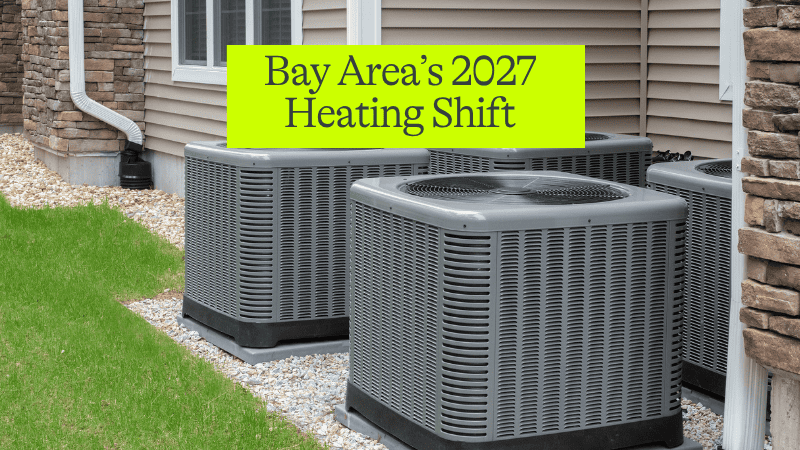Simplifying Energy Jargon
By
Kiana Kazemi
%20(3).png)
A Comprehensive Guide to What All The Energy Terms Actually Mean
Ever find yourself nodding along in conversations about energy efficiency while secretly Googling terms like "kWh" or "Coefficient of Performance"? You’re not alone. The energy world is packed with technical terms and acronyms that can feel like a secret language. But fear not—this guide breaks it all down so you can navigate your energy journey with confidence.
kWh (Kilowatt-hour): This is how we measure electricity use; it represents how much power is used by a device over time (like how much water flows through a hose). One kWh equals 1,000 watts of power used for one hour. For example, leaving a 10-watt light bulb on for 100 hours would use 1 kWh.
kW (Kilowatt): Think of this as the size of the water hose. It measures the rate at which energy flows. A bigger hose (higher kW) delivers water (energy) faster, while a smaller hose delivers it more slowly. For example, a 10-watt light bulb draws 0.1 kW while it’s on—a tiny trickle compared to bigger appliances like a 6-kW dryer!
Therms vs BTUs vs kWh: These are all energy units that measure energy use and delivery. kWh and therms represent energy use, which refers to the total energy consumed by a system. kWh measures electricity use, while therms measure methane gas use. On the other hand, BTUs represent energy delivered, or the energy that actually makes it to the end user or purpose after accounting for inefficiencies or losses. BTUs measure heat, cooling, or hot water delivered (1 BTU represents roughly the heat from burning one match). Converting between them gets nerdy, but think of them as different currencies for energy.
How much energy does one home use in a year?: On average, U.S. homes use 10,715 kWh annually on electricity alone. When you include burning fossil fuels for heating, which accounts for the majority of home energy use, a reasonable conclusion would be at least double this amount of energy is used across different energy types.
Grid Balancing: The delicate dance of ensuring energy supply matches demand—and increasingly, ensuring demand aligns with supply. With the rise of variable renewable energy like wind and solar, balancing demand has become just as critical as balancing supply. This is achieved through tools like demand flexibility (shifting when energy is used) and energy storage (saving energy for when it’s needed). Think of it like traffic control for electricity—keeping everything flowing smoothly to avoid blackouts. Read more about the roles of balancing energy authorities across the US here.
Load Shifting: In basic terms, load shifting is using energy when it’s cheapest or greenest. Here are a few examples:
- Charging your EV overnight when electricity rates are lower (and the grid is often powered by cleaner energy sources like wind).
- Running your laundry machines early in the morning or late at night instead of during peak evening hours.
- Pre-cooling your home during off-peak hours in the summer so you use less energy when prices spike.
- Programming a smart thermostat to heat or cool your home just before peak hours, then maintaining the temperature with minimal energy use.
- Timing your water heater to heat water when energy demand is low, then store it for use later.
- Using Harvest’s smart thermal battery. Harvests runs a heat pump in the middle of the day, when there’s a lot of solar. We store that energy as hot water, and use it whenever you need it without running the heat pump at peak times.
Load shifting is all about aligning your energy use with times when the grid is less strained and cleaner, which helps reduce costs and supports a more sustainable energy system!
Time of Use (TOU): Utilities increasingly charge less for electricity when renewable energy is abundant, like solar in the middle of the day, and more during busy times (think evenings when everyone’s home and the sun has set). TOU plans reward you for using power when demand is low and renewable energy supply is high. For the majority of hours, TOU rates are cheaper than non-TOU rates, allowing users to take advantage of better rates for most of the time, assuming they don’t use the majority of their energy during peak hours.
What are the biggest energy hogs in your home?: More than half of a home’s energy use (52% in 2020, to be exact) goes to keeping us comfy— with space heating and air conditioning taking the crown. Next comes water heating with 19%.The runners-up? Year-round essentials like lighting, and refrigeration, which together accounted for 25% of total home energy use. In other words, the systems that keep you cozy, hydrated, and fed are the biggest players in your energy game! At Harvest, we’ve chosen to focus on heating and hot water, which collectively make up about ⅔ of your home’s energy use (although we also do A/C - and quite nicely).

Passive House: A design approach to buildings that use minimal energy for heating and cooling by maximizing insulation, airtightness, and ventilation. Read more about how Harvest can get you one step closer to a passive house here.
Coefficient of Performance (COP): Think of this as the MPG (miles per gallon) for heating and cooling systems. The higher the COP, the more efficient your system is at turning energy into heat or cooling. Simple math: a COP of 4 means you get 4 units of heating or cooling energy for every unit of electricity used.

.png)
.png)
.png)


.png)
.png)
.png)
.png)
.png)
.png)

.png)
.jpg)
%20(2).png)

%20(1).png)

%20(3).png)

%20(1).png)
%20(5).png)
%20(3).png)
%20(1).png)
.png)
.png)
.png)
%20(4)%20(1).png)
.png)

%20(11).png)
%20(10).png)
%20(6).png)
%20(4).png)
%20(3).png)
%20(10).png)
%20(6).png)
%20(1).webp)
.jpg)
%20(4).png)
.png)
%20(2).png)
.png)













.jpg)



%20copyminimal%20_0.1.jpg)




















